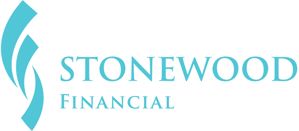How often do you hear about the importance of customer satisfaction?
And how hard do you and your team work to deliver it?
And how many customers leave anyway?
Way too many, I’m guessing.
The truth is that customer satisfaction doesn’t translate into growth and profitability the way the gurus say it will. Why? Because the customer sees a better price and assumes that the service will be good enough. And if they’re wrong, by the time they figure it out, it will be too late for you.
The key to growth and profitability is maximizing recurring revenue, and that’s hard to do if customers keep leaving. Somehow you need to get new customers and keep old customers. For a long time. And that requires a strategy shift.
You need to shift your strategy from customer sat to customer loyalty.
I’m going to lay it out for you in this article. I’ll show you the financial impact, the myriad benefits, and some suggestions to help you make the transition.
An Example
Let’s start with the financial reasoning behind focusing on customer loyalty.
Consider two customer profiles:
Profile 1: Profit = $336
-
The customer has an auto policy with you for 5 years at $1100/year.
-
Year 4: customer renews the auto policy again and buys a renter’s policy at $180/year.
-
Year 6: Customer leaves for a better price.
This customer will provide $5,860 of lifetime premium. At 10% commission, that’s $586. If your customer acquisition cost is $250, that leaves you with $336 of profit.
Profile 2: Profit = $6,406
-
The customer has an auto policy with you for 3 years at $1100/year.
-
Year 4: customer asks for a renter’s policy. You meet with them and get their other auto policy as well. And you find out that they’re saving to buy a house.
-
Year 6: you meet with them to insure their house at $1500/year. You also have a conversation about life insurance.
-
Year 8: you meet with them, and they buy life insurance for $750/year.
-
Over the next twelve years, you meet with the customer 3 more times with no additional sales.
-
Year 20: customer moves to another state.
This customer will provide $72,560 of lifetime premium. At 10% commission, that’s $7,256. If your customer acquisition cost was $250 and each customer meeting cost you $100 on average, that leaves you with $6,406 of profit.
Profile 1 might have had great customer satisfaction. So what? They still left.
Profile 2 generated 18x more profit because of customer loyalty. Each of those meetings gave the agent a chance to establish trust, educate and empower, and show care and credibility. The customer became much less price sensitive.
Why Customer Loyalty Trumps Customer Satisfaction
Customer satisfaction is a leading indicator. It’s a way to partially understand whether customers are going to stay or leave.
Customer attrition is a lagging indicator. It tells you whether customers did in fact stay or leave.
So if you lost 18% of your customers last year, was it mostly due to poor customer satisfaction?
Probably not, right? Customers are leaving you to save money.
It’s not just you.
But you can beat this game. While satisfied customers might leave to save a few bucks, loyal customers are much less likely to. They’re typically the ones who stick around, providing numerous benefits:
-
higher retention rates
-
referrals
-
more predictable, recurring revenue
-
higher profit margins (more Customer Lifetime Value at a lower Cost of Revenue)
-
differentiation and competitive advantage in the market
-
less time spent on problematic customers
-
job fulfillment and alignment with purpose
-
multi-generational relationships
-
impact
Strategies for Building Customer Loyalty
Building customer loyalty requires a different kind of effort than building customer satisfaction:
Customer Satisfaction
-
reactive
-
process driven
-
one-size-fits-all
Customer Loyalty
-
proactive
-
empathy driven
-
individualized
So it’s obvious why they drive different results.
Here are five effective strategies for building customer loyalty in insurance agencies:
Personalized Service: Customers appreciate personalized attention and tailored solutions. Take the time to understand each client’s unique needs and offer customized policy options. Make sure they know you hear them and understand them.
Proactive Communication: Stay in touch with your clients even when there are no immediate needs. Regular communication via email, phone, or social media can help build a stronger relationship with your clients and foster loyalty.
Regular Policy Reviews: If you were to compare two agents’ calendars, one with a full schedule of regular policy review appointments and another without, the agent with the full calendar is likely to have a more loyal customer base. Clients aren’t loyal to an agency they don’t know.
Solve Important Problems: Many of us realize too late that we’re not prepared for the financial realities that we’ll face in later years. Making sure your customers are confidently able to protect their income, their assets, and their legacies is immensely valuable. And protecting them from amateurs who will sell them garbage to make a buck makes you a hero.
Build Trust and Credibility: Establishing a reputation for trustworthiness and reliability can help build customer loyalty. Be transparent in your communications, provide clear and concise information, and always follow through on your promises.
Summary
While customer satisfaction is still important, it is only the beginning. Upgrading customer satisfaction to customer loyalty is the key to maximizing lifetime value and recurring revenue.
Building customer loyalty requires personalized service, proactive communication, and customer meetings, among other strategies.
The benefits of customer loyalty for insurance agencies are clear: increased revenue, customer retention, referrals, and higher profit margins, to name a few.
But it’s not just about the financial benefits; agents with high customer loyalty can make a positive impact in the lives of their customers and communities. By prioritizing customer loyalty, insurance agencies can create lasting relationships with their customers and drive long-term success.
This article content comes from BPC partner Client Focus. To read the original article, visit their website.





.png)






